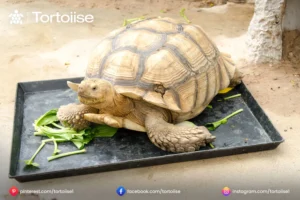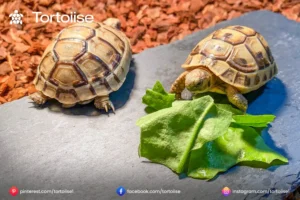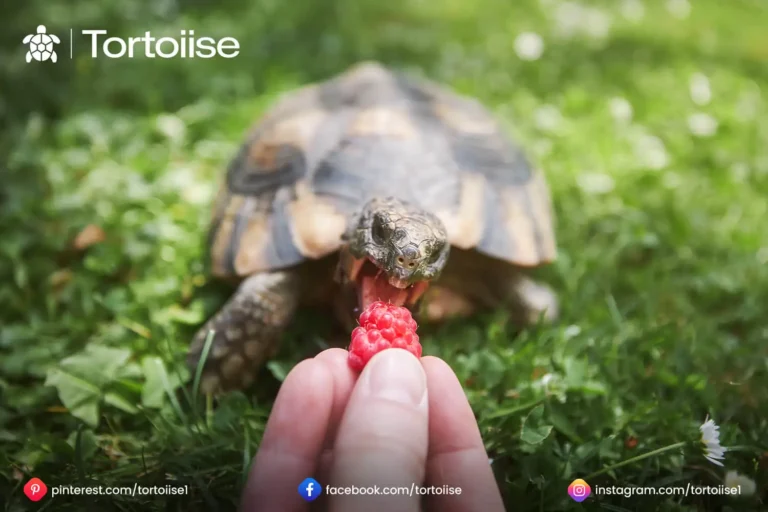How much to feed a Russian tortoise
How often do I feed a Russian tortoise?
Russian tortoises are little, solid reptiles that make incredible pets for novices and experienced attendants. Their happy characters, sensible size, and moderately straightforward care requirements have procured them a spot in the hearts of numerous reptile lovers. Nonetheless, one of the most basic parts of their consideration is guaranteeing legitimate sustenance and deciding how frequently to take care of them.

Taking care of a Russian tortoise isn’t quite as basic as offering food day to day without thought. Their normal eating regimen, natural necessities, and individual wellbeing all play a part in forming their taking care of timetable. This article will give a profound plunge into understanding how frequently to take care of a Russian tortoise, what to take care of them, and how to keep an eating regimen that reflects their wild partners for ideal wellbeing.
The Essentials of Russian Tortoise: Taking care
Figuring out Their Normal Eating Routine
Russian tortoises are herbivores, flourishing with an eating regimen of sinewy, mixed greens, and vegetation. In the wild, they occupy parched locales of Focal Asia, where food sources are scant and comprise for the most of weeds, grasses, and other sinewy plants. Their stomach-related frameworks are adjusted to deal with high-fiber, low-protein, and low-sugar diets and consume fewer calories.
How Frequently Do They Eat in Nature
Right at home, food accessibility changes, so Russian tortoises are crafty feeders. They might eat habitually during the developing season when plants are bountiful and quickly discontinuously during cooler months or times of shortage.
Taking care of recurrence in bondage
Common rules for taking care of
In bondage, Russian tortoises require a steadier care of timetable than in nature. Be that as it may, overloading or starving can prompt medical problems. The overall suggestion is:
Adolescent Russian Tortoise (0–5 years)
Feed every day. A more youthful tortoise is developing quickly and needs normal sustenance to help sound shell and bone turn of events.
Grown-up Russian Tortoise (5+ years)
Feed every other day or five times each week. Grown-ups have slower digestion systems and are inclined to gain weight if overloaded.
This timetable takes into consideration legitimate absorption while forestalling overloading, which can prompt issues like shell distortions and greasy liver sickness.
Occasional Changes
Tortoise Care is normally receptive to occasional cycles. In colder months, they might eat less or even quick totally on the off chance that they are getting ready for brumation (a hibernation-like state). On the off chance that your tortoise isn’t bromating yet appears to be less inspired by food during winter, reduce feeding care of them to every 2-3 days while still offering new water and observing their weight.
How to Take Care of Your Russian Tortoise
A Russian tortoise’s eating regimen ought to copy their regular food sources. Most of their eating regimen ought to consist of mixed greens, with periodic blossoms, vegetables, and supplements.
Essential Eating Routine
Mixed Greens and Vegetation
Center around high-fiber, low-calorie greens, for example,
Dandelion greens
Collard greens
Mustard greens
Turnip greens
Kale (with some restraint because of oxalates)
Endive and escalate
Weeds and Wild Plants
Whenever the situation allows, incorporate safe wild plants, for example,
Plantain (broadleaf and narrowleaf)
Chickweed
Clover
Thorn
These weeds are nearer to what Russian turtles consume in the wild and are profoundly nutritious. Guarantee that any wild plants are liberated from pesticides and herbicides.
Infrequent Vegetables and Treats
While vegetables ought to make up only a small part of their diet, you can at times offer:
Chime peppers
Carrots
Zucchini
Cucumber
Keep away from high-sugar vegetables like yams and corn. Natural products are not a characteristic part of their eating regimen and ought to only be given as intriguing treats, like a little piece of strawberry or melon once a month.
Calcium and Enhancements
Calcium is fundamental for shell and bone health.
Give Calcium powder with vitamin D3. Sprinkle a modest quantity on their food 2-3 times each week.
Cuttlebone: Leave a cuttlebone in their nook with the expectation of complimentary access.
The amount to take care of a Russian turtle
A typical guideline is to give a piece of food, generally the size of the turtle’s shell. Adolescents might require somewhat more to oblige their quick development, while grown-ups may require somewhat less. Continuously eliminate uneaten food following a couple of hours to forestall deterioration.
Overloading is a typical misstep. Russian tortoises are small and don’t need a lot of food. Taking care of a lot of can prompt:
Pyramiding
A condition where the shell creates raised, uneven scutes because of unnecessary protein or an ill-advised diet.
Health ftiness
An overweight tortoise might experience issues withdrawing its appendages into its shell, and weight can prompt organ strain.
The Job of Hydration
Russian turtles get a lot of their water from their food; however, hydration is not yet critical. Give new, clean water day to day in a shallow dish. Moreover, absorb your tortoise tepid water for 15-20 minutes a few times per week, particularly for adolescents. This forestalls a lack of hydration and supports defecation.
Taking care of difficulties and arrangements

Demanding Eaters
A few tortoises might incline toward specific greens and reject others. To empower a reasonable eating routine
Leave a combination of greens as one, so the tortoise can’t choose its top picks.
Continuously present new food varieties by blending them in with recognizable ones.
Indulging
Russian tortoises have good cravings; however, they ought not be permitted to brush openly on a lot of food. Adhere to a timetable and eliminate extras to forestall indulging.
Occasional Hunger Changes
Assuming your tortoises’ hunger diminishes during winter, screen their weight to guarantee they are not losing too much. Diminished taking care of is normal, yet critical weight reduction might demonstrate a fundamental medical problem.
Indications of a Sound Eating Routine A very much taken care of tortoise will display
Smooth shell development
no pyramiding or staining
Dynamic way of behaving
inquisitive and alert during taking of care times.
Consistent weight gain
especially in adolescents, whose development ought to be steady.
Screen your tortoise’s weight month to month utilizing a small digital scale. Fast weight gain or misfortune ought to be handled expeditiously.
Food varieties to keep away from
Not all plants and vegetables are ok for the Russian tortoise. Abstain from taking care of
A chunk of ice lettuce needs a healthy benefit.
Spinach contains oxalates that hinder calcium assimilation.
Rhubarb is poisonous to tortoises.
High-protein food sources
like beans, peas, or canine/feline food.
Organic products
While not harmful, organic products are high in sugar and ought to be given sparingly.
Adjusting taking care of timetables for your turtle
Each turtle is special, and their requirements might differ marginally. Change their taking care of schedule given:
Movement Levels
An exceptionally dynamic tortoise might require more constant care.
Medical issue
Counsel a vet on the off chance that your tortoise has exceptional dietary requirements.
Development Stage
Adolescents need more continuous care than adults.

Determination
A Decent Way to Deal with Taking Care of
Taking care of a Russian tortoise is both a craft and a science. Understanding their normal eating regimen and propensities is vital to keeping up with their wellbeing and satisfaction in bondage. While adolescents blossom with day-to-day feedings, grown-ups require a more estimated approach to dealing with obesity and other medical problems.
By offering a fluctuated diet of mixed greens, wild plants, and intermittent vegetables and sticking to a reliable care schedule, you can guarantee your tortoise carries on with a long, solid life. Customary checking, appropriate hydration, and thoughtfulness regarding occasional changes will additionally uphold their prosperity.
The delight of really focusing on a Russian tortoise lies in their enchanting characters as well as in the information that your smart consideration adds to their flourishing, each painstakingly prearranged feast in turn.
Inform me as to whether you’d like further alterations or explicit areas extended!

